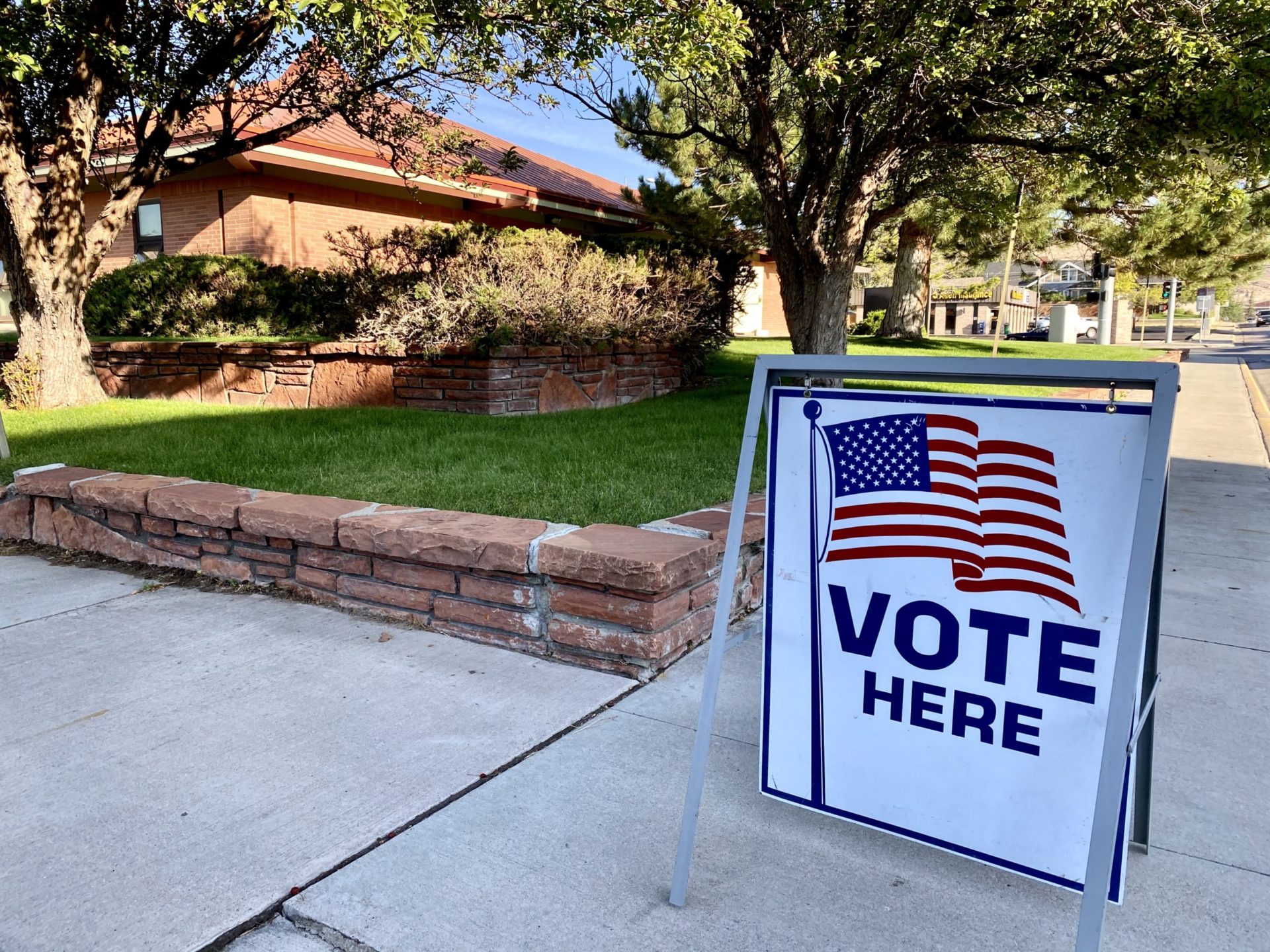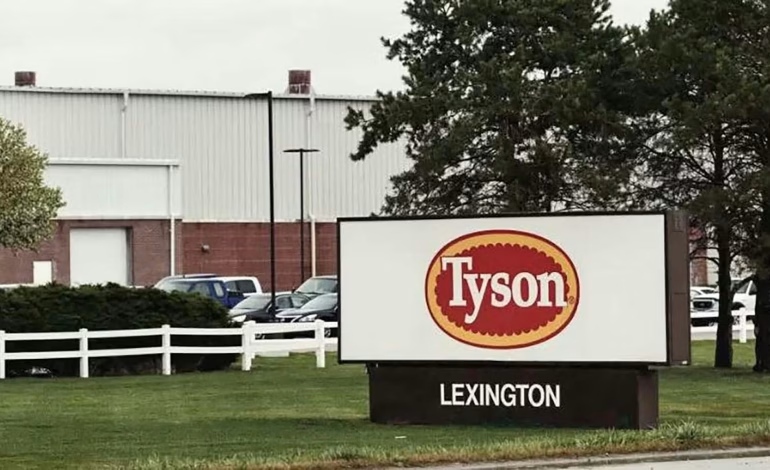The original story by Renée Jean for Cowboy State Daily.
When Tyson Foods announced it will shut down its Lexington, Nebraska, beef plant in January, a lot of people saw a business decision. Wyoming ranchers saw a flare going up over the entire cattle industry.
To them, it’s not just one plant going dark. It’s a sign that the whole system — from calves on Wyoming grass to hamburger on a grocery shelf — is under real strain.
“It should be a flare for cattlemen across the country, and it should be a flare for consumers,” Crook County rancher Tyler Lindholm said. “This is a huge signal that we’re in deeper water than we thought we were.”
The Tyson plant in Lexington processes around 5,000 cattle a day. Some of those cattle “no doubt” come from Wyoming, Lindholm told Cowboy State Daily.
“A lot of cow-calf operators sell into Nebraska,” he said. “And those calves are going to Nebraska feed lots, which depend upon that packing.”
When that plant closes in January, the immediate scramble will mostly hit the feedlots that have been shipping their finished cattle to Tyson. Overnight, they’ll need to find new packers just to stay in business.
That short-term scramble might be manageable, Lindholm said, at least in Nebraska.
“Nebraska does have quite a few of them,” he said. “Sustainable Beef is there, the Smithfield folks are there, so there’s quite a few opportunities.”
But that’s just the first ripple.
Laramie County rancher and former National Cattlemen’s Beef Association president Mark Eisele says the next step is pretty predictable: lower bids for cattle.
“Depending on who is buying those cattle, they may have to bid less to cover the transportation to other places,” he said.
Fewer plants means longer hauls. Longer hauls mean higher costs. Those costs don’t come out of packers’ pockets for long — they get pushed back down the chain to ranchers.
On paper, cattle prices look strong right now. That might sound like good news for ranchers, but it’s more complicated than that.
“What’s happening now is all about the price of cattle and the corresponding lack of supply,” one rancher explained.
Those two forces — high prices and low numbers — are acting “like hammer and anvil,” with beef processors caught in the middle.
If there aren’t enough cattle to keep giant plants running efficiently, those plants start losing money. Tyson’s own CFO, Curt Calaway, has estimated the company will lose $400–$600 million in operating income from its beef division because there just aren’t enough cattle coming through.
With cattle numbers at their lowest since 1951, Lindholm expects Lexington won’t be the last plant to go.
“There’s just too much excess capacity in the packing plant industry right now,” he said.
And every time a big plant shuts down, America’s total beef processing capacity gets a little thinner.
To ranchers like Lindholm, the closing of big US plants and the rise in imports are part of the same story.
“Really, what this amounts to is more centralization of packing facilities,” he said.
That’s a trend ranchers have been fighting for decades. A handful of big packers dominate the industry. Fewer plants means more concentrated power, less competition for cattle, and more leverage for those who control the remaining chains.
On top of that, Lindholm says, American regulations are pushing more of the slaughter and packaging overseas.
“Our laws and our regulations centralize power around a select few and, as we’re moving along, what we’re finding is that it’s much cheaper, much like any other product, to have it manufactured, or in this case, packaged, in another country, because US regulations are insane,” he said.
When imports go up, it’s not that live cows are walking across the border.
“It’s not a cow, it’s boxed beef,” Lindholm said. “So what we’re really pushing forward on is for our products to be slaughtered and packaged in another country.”
Those foreign plants may not meet the same safety and quality standards US facilities are held to, ranchers warn. And every pound of imported boxed beef is one less reason to raise, feed, and process cattle here.
If this trend continues — shrinking herds, more imports, fewer packing plants — the question becomes brutal for states like Wyoming:
Why raise cattle here at all?
“With cattle herds continuing to shrink and beef imports continuing to rise, this will mean less and less reason for cattle to grow up in Wyoming,” Lindholm said. “Over time, you’re going to see less and less reason to even have a (meat packing) plant at all. And those jobs will all be exported, too, right across our borders.”
Rebuilding cattle numbers isn’t as simple as flipping a switch. Ranchers are dealing with:
An aging producer base.
“We’ve got a lot of older producers who see good prices and they’re wanting out,” Eisele said.
Huge startup costs.
“The expense — the capital to get in — for the land and the equipment, is so much higher now. So young people aren’t getting in.”
Dry weather and tough conditions.
Drought and poor forage make it even harder — and riskier — to rebuild herds.
“Some people are saying I can’t rebuild the herd and I’m not going to rebuild the herd,” Eisele said. “So we end up with both of those concerns, and it absolutely is a train wreck, because we don’t have enough producers.”
If fewer people are running cows, and more plants are shuttering, today’s “temporary” closures could quietly become the new normal: a permanent lower baseline for US beef production and a higher baseline for imports.
To many ranchers, the Tyson closure isn’t just a market blip. It’s proof that the rules themselves need to change.
“Congress needs to get off their duff and do something about this,” Lindholm said.
He and others argue that the Meat Inspection Act and related laws, as currently written, favor huge federally inspected plants and make it incredibly hard for smaller or local processors to operate and sell meat across state lines.
That’s why there’s growing interest in two federal bills:
The DIRECT Act – a small step
The DIRECT Act, reintroduced by Sen. Roger Marshall, R-Kansas, would tweak federal law to let producers ship small amounts of state-inspected meat directly to consumers over the internet. The limits would be:
- Up to 300 pounds of beef;
- 100 pounds of pork;
- 27.5 pounds of lamb per producer.
“If we get this state-inspected meat, that will help some of the local sales, some of the direct-to-consumer sales,” Eisele said. “That will mean some opportunities for smaller plants.”
Lindholm, though, sees it as far too modest.
“I mean, that’s a nice Band-Aid,” he said. “All the respect for Sen. Marshall. That’s a nice Band-Aid, but for Wyoming, we have a limited number of federally inspected facilities, just like we have a limited number of state-inspected facilities.”
With so few inspected plants and such low volume limits, he doesn’t think the DIRECT Act can move the needle much.
The PRIME Act – a bigger swing
What Lindholm really wants is the PRIME Act, which would let states decide whether their custom slaughter facilities can retail their own meat within state lines.
“That could have a much bigger effect,” he said.
Right now, even in a place swimming in cattle, ranchers can’t easily get local beef from hoof to retail case.
“Right now, the little town of Sundance, where I live in Crook County, is one of the highest cattle-producing counties in the state,” Lindholm said. “We’ve got beef on the hoof all around this town.”
But there’s not a single facility in the area where that local beef can be processed for retail sale.
“That’s crazy, isn’t it?” he said. “There’s only 7,000 people in this whole county, but I’ll bet there’s north of 100,000 beef. But you can’t get it butchered here. It’s insane. It’s crazy.”
To ranchers like Lindholm, that’s exactly backward: Wyoming grows the cattle, but other states — and increasingly other countries — get the jobs and the value that come from turning those animals into finished beef.
On its face, Tyson’s decision to close one plant in Nebraska might look like a corporate accounting call. But on the ground, it lands very differently.
To Wyoming cattle producers, it’s a warning that:
- Herds are too small;
- Packing capacity is mismatched;
- Imports are poised to grow;
- And current federal law is stacked in favor of consolidation and overseas processing.
Lindholm doesn’t sugarcoat it.
“(The closure of this plant) should be a flare for cattlemen across the country, and it should be a flare for consumers,” he said. “We’re in deeper water than we thought we were.”
What happens next — whether Congress rewrites the rules, whether more plants close, whether smaller processors get a real chance — will help decide whether Wyoming keeps being a cattle state in more than just name.










The latest news in your social feeds
Subscribe to our social media platforms to stay tuned